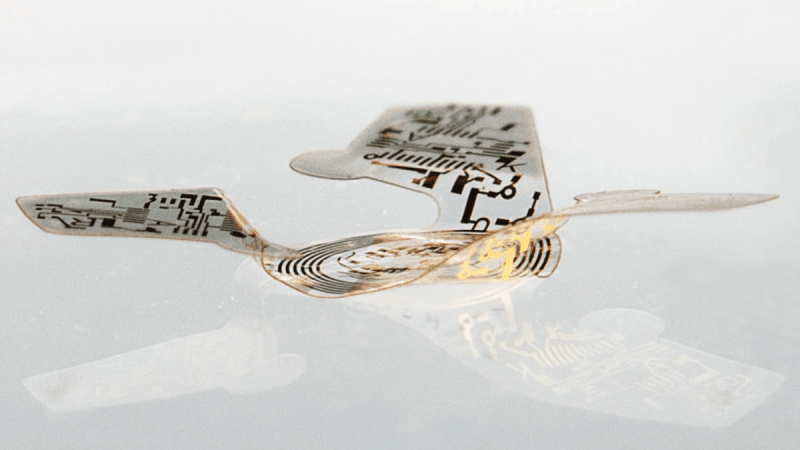On September 23, the journal 'Nature' released an article describing how Northwestern University develops a new flight capability into its electronic microchips. This is the tiniest flying structure ever created by humans.
Northwestern University's John A. Rogers led this project. They developed these micro fliers to observe the environment for pollution, demographic surveillance, and disease tracking purposes.

Where did they get this idea from?
Engineers drew inspiration from biological structures such as wind-dispersed seeds.
"Evolution has likely led to several types of advanced aerodynamic properties of seeds," Rogers said. "These biological structures are designed to fall slowly and in a controllable manner to maximize their interaction with the winds. A passive and aerial technique increases lateral distribution," he added.
The Northwestern team was inspired by the tristellateia plant, a blooming vine with star-shaped seeds, to build the micro fliers. Tristellateia seeds feature wing-like blades that catch the wind and descend slowly.
They discovered that this behaviour stabilizes the flight, guarantees broad dispersion, and extends the amount of time the seed interacts with the air, making it perfect for tracking air pollution and airborne disease.
Rogers' group next constructed and tested structures in the laboratory using improved tools for imaging and quantifying flow patterns.

The mechanism
His team first created flat, planar flying structures. This was followed by a rubber substrate gently stretched. When the stretched substrate is relaxed, the wings "pop up" into distinct three-dimensional structures.
This idea was inspired by a child's pop-up book. "This technique of building 3D systems from 2D predecessors is useful due to the fact all present semiconductor gadgets are built-in planar layouts," Rogers explained.
Micro fliers are made up of two components: millimetre-scale electrical functional components and wings. Rogers' team added sensors, an energy harvesting source of power, memory storage, and an antenna capable of wireless data transmission to a smartphone, tablet, or computer.
They are building micro fliers that organically decay and dissolve in groundwater.
"We create these physically transitory electronics systems employing degradable polymers, compostable conductors, and dissolvable integrated circuit chips," Roger stated. Recognizing the difficulty of recovering stacks and stacks of micro fliers, these biodegradable versions degrade naturally and harmlessly."

Previous studies done
The journal Nature recently released a paper on the evaluation of microclimatic detection in forest ecosystems using a wireless sensor network. In this study, the precision of temperature and humidity measurements made using wireless sensors was compared to standard meteorological data in two typical subtropical forest habitats in Zhejiang Province, China.
The results indicated that temperature and humidity measurements obtained by wireless sensors functioned well within the accuracy of the overall observation.
Another research was conducted by Jihun Lee of School of Engineering, Brown University on Neural recording and stimulation using wireless networks of micro-implants. They described wirelessly operated and connected electronic microchips as being able to autonomously perform neurological perception and electrical micro-stimulation.
They conducted a study in which they demonstrated how 48 neurograins can be treated individually on the cortical surface of a mouse and used for an acute recording of neural activity. The results indicated that by customizing the time-division multiple access technique, the link configuration may potentially be increased to 770 neurograins.

















